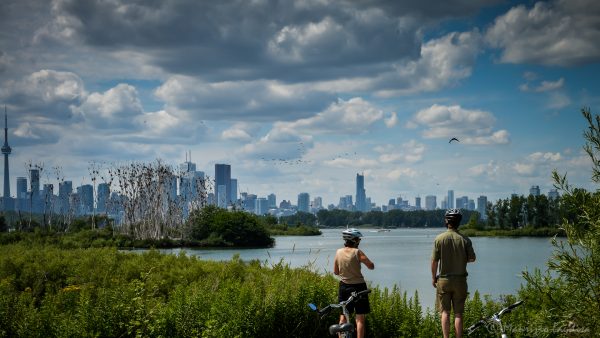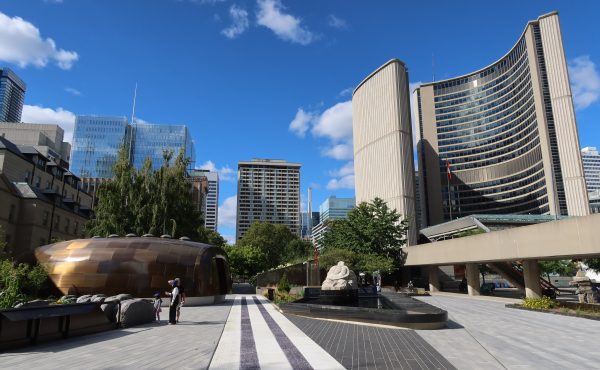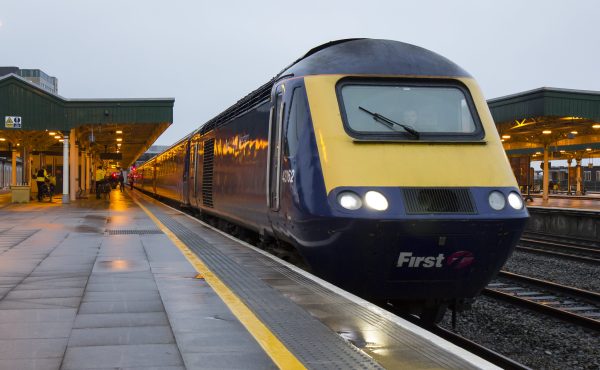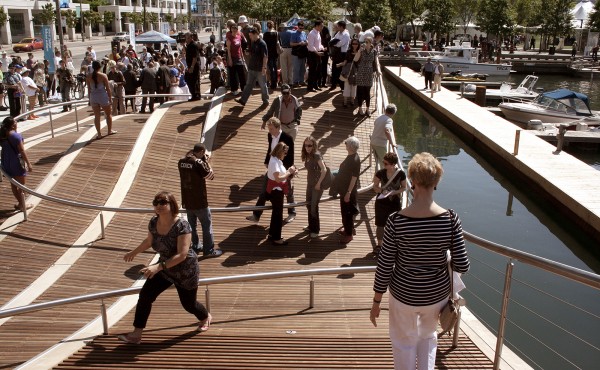There was a burst of side-taking last week after the ever-green topic of improving access to Toronto’s pre-eminent public space bobbed, again, to the political surface. The question: how to improve active transportation access to Toronto Island, including possibilities for a fixed link across the Eastern Gap?
In response to a staff report to the executive committee, which lands on city council’s agenda this week, various urbanists declared themselves to be on “Team Gondola.” Besides former council candidate April Engelberg, I didn’t see too many people on social media publicly nailing their colours to the “Team Fixed Link” mast, but I know they’re out there.
Don’t expect council to actually get off the fence this week; heaven knows that anything as rash as an actual decision to confront the extravagantly well-documented problem of getting to the island is not in the political cards.
Rather, the staff report commits — tell me if you’ve heard this number before — to a range of consultative exercises, as well as the establishment “a Toronto Island Access and Inner Harbour Transportation Task Force for the purpose of actioning, accelerating and coordinating short- and medium-term Toronto Island access improvements and advancing due diligence related to long-term opportunities, including a fixed link, and inner harbour transportation.”
The, uh, actioning of these improvements is, I suppose, encouraging. But if you dive in to the document, you’ll discover an exhaustive (and exhausting) list of reasons why building a bridge over the Eastern Gap will be dauntingly complicated — notwithstanding the fact that cities have been building bridges over far busier waterways for a very long time. It could take a decade to get from a feasibility study to a functioning bridge, the report states, provocatively.
I want to dwell on timelines here, because it often feels (to me, anyway) as if the Island will have drifted out to sea before anything actually improves, and this in stark contrast to the rapid and accelerating changes taking place along the central and eastern waterfront.
A dutiful canvas of technical, commercial and public opinion is certainly important, as the authors of last year’s Toronto Island Master Plan acknowledged. But let’s be frank about who won’t be consulted or represented on the aforementioned taskforce: the legions of Torontonians who long ago gave up trying to visit the Island, especially on those days when visiting it seemed like a very good idea — except for the pain-in-the-butt factor.
Children have been born, raised, and moved away during the time the City has wasted, putzing around with the ferry replacement scheme, which only seems to recede every time a milestone approaches. The report coming to council also mentions the rehab of the Jack Layton Ferry Terminal, which also remains little more than an unfunded architectural fantasy.
There’s a way to read the staff report as a roadmap — albeit one that will require some tricky steering — to a fixed link over the Eastern Gap. There’s also a way to read it as a grocery list of reasons for why we shouldn’t go there. The report further raises, but doesn’t really engage, with the notion of building a gondola, except to assert — somewhat disingenuously in my view — that they’d cost roughly the same (a very ballparked $100 million).
Let me make a few points about the gondola scheme. I’m sure it’s possible, and there are examples elsewhere. It will surely require far more staffing than a bridge, even one that can open and close and therefore requires an operator.
But the most salient point about a gondola is that, like the ferry, it essentially creates a new form of access limitation to the island. You’ll have to queue. You’ll probably have to pay. And at a certain point — perhaps on day one — the gondola service will reach capacity and then we’ll be having this conversation all over again.
Bridges —even lift bridges that open and close to allow shipping traffic — enable accessibility rather than stand in its way. Which, let’s face it, is the elephant in this room. Civil engineers have understood how to build lift bridges for centuries. Conservation authorities and landscape architects have understood for decades how to build elevated paths over ecologically sensitive areas, such as those found on the Island’s eastern tip. The land ownership issues — Ports Toronto and the City both own land at either side of the Eastern Gap — can be sorted out by lawyers with a mandate to get to yes.
In my view, the real question isn’t actually technical, but rather one about principle: are we going to be a city that continues to toll and restrict access to our most “beloved” public space? As germane, will we be a city that fails to expand the waterfront connectivity that was expressed as a fundamental planning goal in the 2002 waterfront secondary plan, and which continues to drive investment in public space shoreside?
These aren’t theoretical questions. Someday — hopefully sooner rather than later — a community with tens of thousands of people will be living on and near the Port Lands, with many more recreating in the extraordinary parks along the new lower Don.
Those notional future residents should be able to take for granted easy pedestrian/cycling connectivity to the Island, as much we currently encourage the city to constantly expand the bike and walking paths up the Don and into the West Donlands, east and west along Queen’s Quay/Lakeshore, and north, over the tracks and along the West Railpath.
If access to the Island continues to be throttled at the foot of Bay, those future Port Landers will feel as far away from the Island as if they lived in North York or Scarborough — except that this obvious destination will be frustratingly close, at least as the crow flies.
I would not be surprised if council’s Team Gondola voices this week succeeded in sending City officials back to their desks to come up with a gondola feasibility study, which will involve much more consultation and technical review, an inevitably belaboured search for arrival and departure terminal zones, and on and on. All the while, the elusive riddle of true access, as opposed to the controlling access the city loves unreservedly, will dangle in the middle distance, maybe even guiding council to a familiar delay-tactic and then a decision that underscores the irony of failing to make the Island easier to reach in the name of accessibility.
Council will vote to do something this week, but I’d urge Mayor Olivia Chow, who has been a long-standing proponent of the Toronto Island, to compel City staff to perform all its analysis rapidly, with the goal of forcing a real, fully-budgeted choice before her term is finished next year. This is a legacy move, and this mayor needs to speak plainly about the human and urban consequences of endless delay in the name of due diligence.
For clarity, I don’t know whether Chow is on Team Fixed Link or Team Gondola. While my preference is the former, I mainly want her to take the helm of Team Get-it-Done — a leader prepared to spend some of her political capital on a principle she’s advocated for so long.
photo by Maurizio Laudisa (cc)






One comment
What to think? I’m firmly confused.
Part of the charm of the islands seems to be the lack of access, a sense of other-worldliness.
Carried too far? – to an extent that I went 40 years between visits. And I can think of few other municipal parks that restrict access. However, most conservation areas and provincial parks do control access, and charge for entry, usage or parking. Mississauga, the home of free parking, I believe does charge to park at waterfront parks.
Tunnel idea got short shrift here – but obviously feasible since already have one at the airport end. How long would it take to walk through a tunnel? Does it become a safety issue at night? There are obviously already pedestrian tunnels or subways in T.O., but I imagine most are shorter, or have passing cars should someone require assistance.
A Lift Bridge – if it were tall enough when lowered to allow the passage of “most” recreational boats, to minimize the number of daily lifts. But how tall is that? To clear the masts of a recreational sailboat? If you look at the lift bridge in Burlington, it is a bit of an eyesore, despite the somewhat jaunty “Canada” wordmark. Speaking of which: would the Feds chip in, navigable waterways being their wheelhouse?
A fixed bridge? How tall? Port of Toronto still does “some” business I believe, mostly road salt, concrete and some other bulk cargoes.
Would we toll either a bridge or tunnel? Who goes through? Cars? Likely not. Bikes? Surely. Electric bikes? Goodness knows. So there is always a measure of “control”. It need not be a pejorative.
A Gondola has a certain flair/charm/novelty to it … certainly appealing to Doug Ford … but the article points out problems of capacity and queuing. I might add maintenance, and being shutdown on stormy days. And safety – how to rescue stuck passengers as occasionally happens with ski lifts.
“Portlanders” are supposed to be living in 1 billion dollars worth of parkland already, with the mouth of the Don rework, are they not? Or am I thinking old – the waterfront population has obviously increased.
Add new third ferry port in the Portlands? Would be a quick, short run (longer than the airport, but shorter than from Jack Layton). Allow private water-taxis? (everything doesn’t always have to be on the public tab).
Could something be done at the airport end to utilize the existing tunnel and very short ferry trip? I suspect it would be a longish walking detour around the airport, plus security concerns. (and doesn’t help “Portlanders”)
Finally, the Leslie St Spit remains largely undeveloped. I am sure numerous advocates hope to keep it that way, but I think there would be room for a more “parkified” sector.